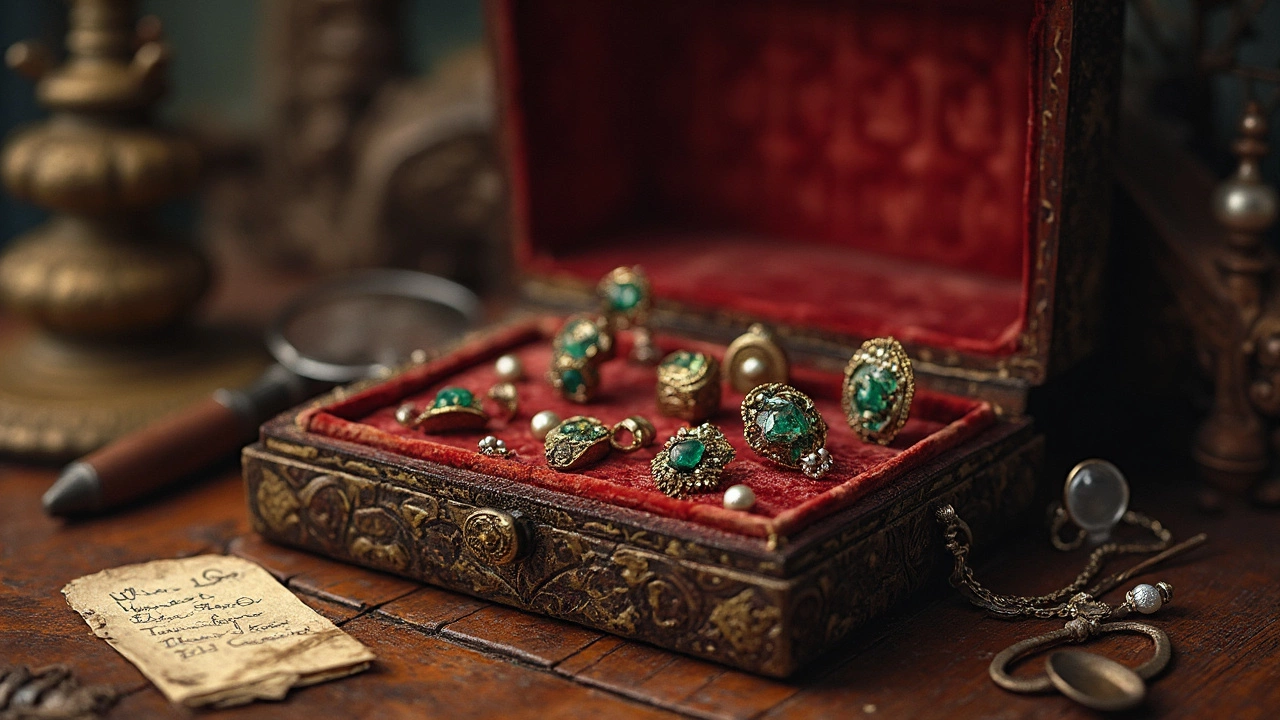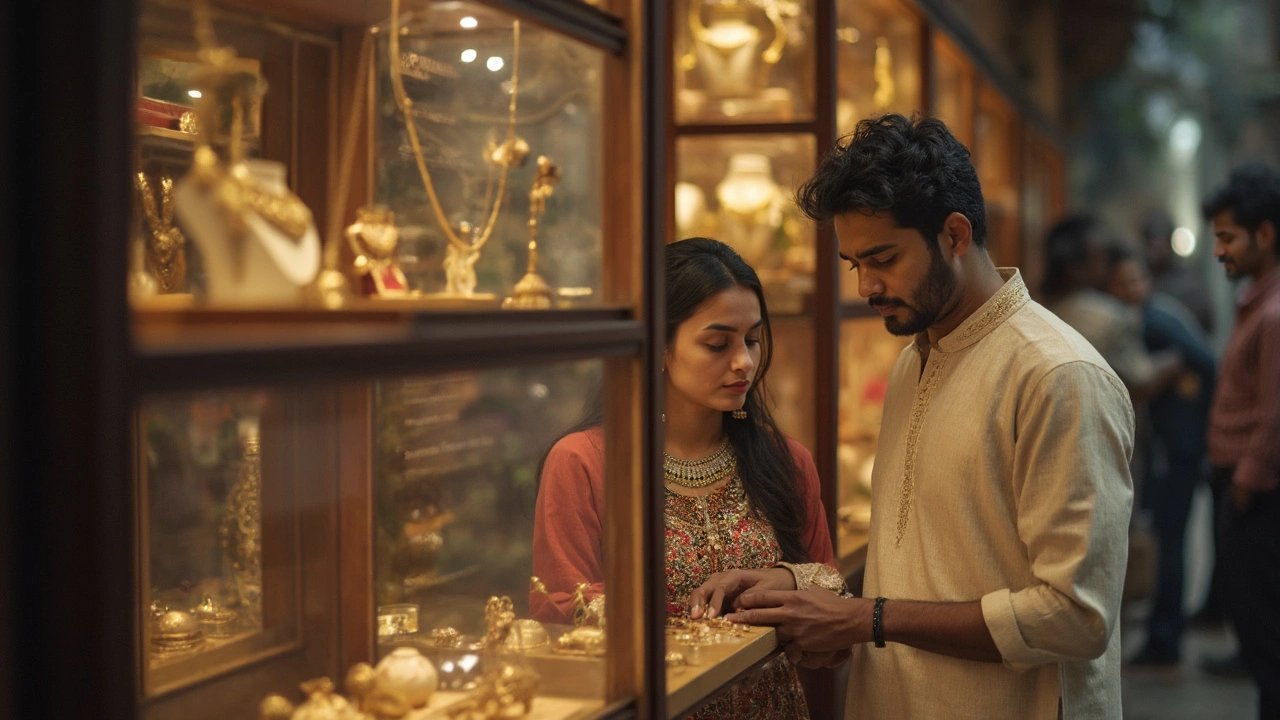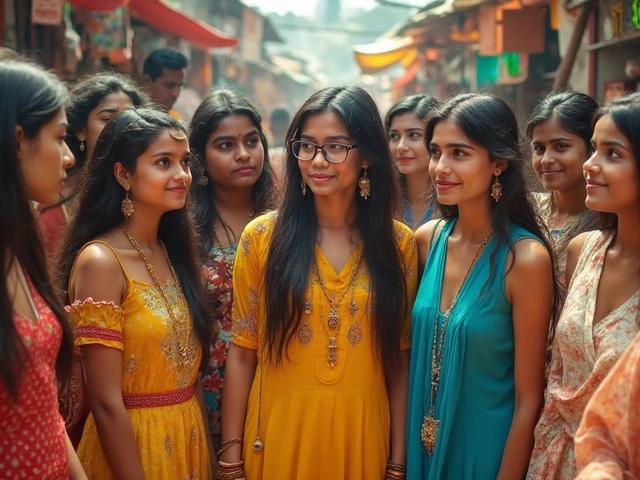Imagine stumbling upon a dusty old jewelry box in your grandmother’s attic, pulling out a ruby Art Deco brooch or a chunky Victorian gold ring, and wondering if this could actually pay for your next family vacation—or if it’s just sentimental value talking. That's the charm and intrigue of antique jewelry. Tastes evolve, trends come and go, but rare and beautifully crafted pieces from decades or even centuries ago still have people buzzing. The stories, provenance, and skill stitched into each piece draw in collectors, casual buyers, and the occasional investor who loves shiny, tangible assets. Antique jewelry isn’t just about an investment; it’s also about preserving little slices of history people can wear. You might be surprised just how alive and kicking this market really is.
How Big Is the Market and Who Are the Buyers?
Forget the stereotype that only antique-dealers or well-heeled grandmothers care about estate jewelry. Interest in antique pieces—especially those from distinctive periods like the Art Deco, Edwardian, or Georgian era—has quietly exploded, fueled by everything from Instagram influencers to Netflix costume dramas. According to a 2024 Statista report, the global collectible jewelry market, which includes antiques, was valued at over $8 billion and showed an annual growth rate of around 5%. In the US alone, several large auction houses have seen their jewelry category revenues double in the past five years, with antique and vintage rings, necklaces, and brooches making up about 30% of all jewelry lots. The pandemic, oddly enough, gave the market a gentle nudge—people, stuck at home, combed through family heirlooms and discovered newfound enthusiasm for old treasures.
If you think the buyers are just retirees, think again. Millennials and Gen Z, spurred on by a taste for sustainability, eco-conscious fashion, and nostalgia, are picking up everything from colorful Georgian enamels to quirky 1970s gold chains. Social media has become an unlikely hub for these treasures, with hashtags like #vintagejewelry and #antiquejewelry racking up millions of posts. Notably, platforms like Etsy and Instagram have spawned a new genre of small boutique sellers who source and market unique antique finds directly to these younger buyers. And when it comes to high-profile sales, celebrities and stylists regularly push demand higher—a famous example is Lily Collins wearing vintage Cartier at the Met Gala, causing searches for similar brooches to jump by 28% in a single week.
Here’s a quick look at who’s buying and what’s hot, based on 2025 market insights:
| Buyer Demographic | Most Desired Style/Period | Average Price Range |
|---|---|---|
| 18-30 yrs (Gen Z/Millennials) | Mid-century Modern, Art Deco | $200 - $2,500 |
| 30-55 yrs | Art Nouveau, Georgian, Edwardian, Statement pieces | $500 - $10,000+ |
| Collectors/Investors | Signed pieces (Cartier, Van Cleef & Arpels), Rare gems | $5,000 - $500,000+ |
Of course, there’s always someone hunting for that bargain piece at a flea market. But the big numbers, the blockbuster auctions, and the Instagram-fed trends spotlight just how wide-ranging and resilient the market for antique jewelry actually is.

What Makes Antique Jewelry Valuable?
It’s tempting to think that age alone is the main thing—but there’s more to the story. For a piece to command real money (or emotional value), you need a mix of factors: rarity, craftsmanship, condition, provenance, and sometimes even trends. Pieces from celebrated periods, such as Edwardian filigree rings or Art Deco platinum brooches, have a fan base not just because of how old or sparkly they are, but due to their unique design and connection to cultural moments. For example, jewelry from the Roaring Twenties gets a boost every time flapper style resurfaces—thanks, Great Gatsby remake!
Craftsmanship plays a huge part. Pieces with hand-cut gemstones or elaborate enamel work dazzle collectors, especially as such skills become harder to find in the world of mass production. Signed pieces—think Cartier, Tiffany & Co., Van Cleef & Arpels—always fetch more, sometimes exponentially. A signed 1930s Cartier Egyptian Revival brooch might go for $25,000 at auction, while a similar-looking unsigned piece might struggle to clear $2,000.
Condition is just as crucial. Minor repairs or replacements can sink value fast, while original boxes and paperwork can add serious money. A known fact is that jewelry with a documented history (provenance), especially pieces that belonged to royalty or famous personalities, become instant obsessions for collectors. The sapphire and diamond cluster engagement ring worn by Princess Diana, now Kate Middleton’s, would arguably be worth a small fortune in just provenance alone, apart from its gem content.
Don’t forget market trends and demand. For instance, colored gemstones are hot right now. According to Bonhams auction data from late 2024, prices for vintage pieces featuring sapphires and spinels rose by 12% year-over-year. Pearls, which were out of fashion a decade ago, are back in demand, especially for natural (not cultured) pearls in antique settings. On the flip side, pieces that need lots of upkeep—or feature outdated motifs—tend to languish, unless they’re supremely rare.
Interested in figuring out what your own family heirlooms might be worth? Here’s what the professionals look for:
- Original condition—unpolished gold, no replaced stones, and no obvious repairs
- Maker’s marks or signatures
- Distinctive stylistic elements from known periods (like milgrain on Art Deco rings)
- Unique or rare gemstones
- Full sets (earrings with matching necklaces, original presentation boxes)
Pawn shops and jewelry stores usually offer a fraction of auction prices, so savvy sellers often get pieces professionally appraised first before going to market. And don’t forget certification—documents from GIA or similar organizations can make a huge difference, especially for colored stones and pearls where treatments aren’t always obvious to the naked eye.

How to Buy and Sell Antique Jewelry Today
Gone are the days when your only option was the corner antique shop. The explosion of online auction platforms, Instagram live sales, and specialty antiques fairs means buyers and sellers have more ways than ever to move pieces. But this also comes with a ton of traps for the unwary.
Here’s how the modern antique jewelry market operates:
- Antique jewelry is sold through auction houses (like Sotheby’s, Christie’s), established dealers, online platforms like 1stDibs and Etsy, and direct peer-to-peer sales on platforms like eBay and Instagram.
- Online auctions now attract bidders worldwide, with Sotheby’s Paris reporting over 45% of their jewelry bidders in 2024 came from outside France.
- Instagram “story sales” by expert-curated accounts see pieces priced between $50 and $15,000 sell out within hours—or even minutes.
- Specialists at brick-and-mortar stores still play a role, especially in cities with a vintage or art scene. Local jewelers can help with authentication and repairs.
If you’re new to buying, use these survival tips:
- Research periods, materials, and makers before buying—you don’t want to pay for “Art Deco” if it’s really an ‘80s copy.
- Check return policies and authenticity guarantees, especially with online sellers.
- For expensive pieces, request a certificate or lab report (for gemstones) or documentation.
- Ask for detailed photos showing all marks, signatures, and condition issues—and never be afraid to request video with scale.
- If purchasing at an auction, remember the buyer’s premium, which can be 20-30% on top of hammer price.
Thinking of selling? My son Aryan once asked why people even part with such treasures. Sometimes it’s the promise of a big sale, sometimes it’s about passing stories along. First, get a professional appraisal, and check recent sales data for similar items. If you’re selling high-value jewelry, certified auctions can attract higher bids (and create bidding wars), but take their commission. Smaller or mid-range pieces often do better through online marketplaces or trusted Instagram accounts with engaged followers.
What about fakes and frauds? This is a hot-button issue, with knockoff Victorian brooches and even "antique" engagement rings made just last year showing up on resale sites. Real experts rely on a mix of scientific testing (like XRF analysis for metal content), checking hallmarks, and simply having handled enough genuine pieces to sniff out red flags. When in doubt, get a second opinion, and never trust wild claims without legitimate documentation. The higher the price tag, the more cautious you should be. Always remember—even specialists can miss fakes, so err on the side of caution.
Bottom line: There’s an active, lively, and even global market for antique jewelry driven by long-standing collectors and new, younger buyers chasing sustainable style and one-of-a-kind treasures. Whether you’re sorting the family collection, thinking of investing, or just hunting the next wow-factor ring, it’s a niche with energy and strong demand. The best pieces blend history, artistry, and a touch of intrigue—and whether you’re buying or selling, that never goes out of style.



